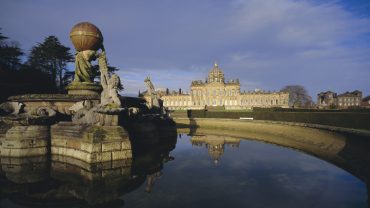The Norman Conquest, led by William the Conqueror and culminating in victory over King Harold at the Battle of Hastings in 1066, reshaped England, both metaphorically and literally. The Normans didn’t just claim the throne, they transformed the landscape with imposing castles and magnificent cathedrals, each one a testament to their power and faith. William’s policy was to build quick and build big, and nearly a thousand years later, his Norman cathedrals in Britain remain awe-inspiring landmarks.
The Normans built with urgency, using grand cathedrals to unite a conquered land, impress the locals, and perhaps most importantly, keep the Church on their side. These extraordinary edifices were built to be the centre of civic pride and a display of Norman French culture and sophistication as England emerged from the Dark Ages.
Britain’s Norman-era cathedrals tell tales of grand coronations, political rebellion and royal intrigue, and their survival over nearly a millennium owes much to solid construction, ingenious medieval engineering, and dedicated preservation, from Victorian restorations to modern care.
Neither war, weather or time have dimmed their grandeur, but what are the most incredible Romanesque cathedrals in the UK? Let’s find out.
What is the Romanesque Style of Architecture?
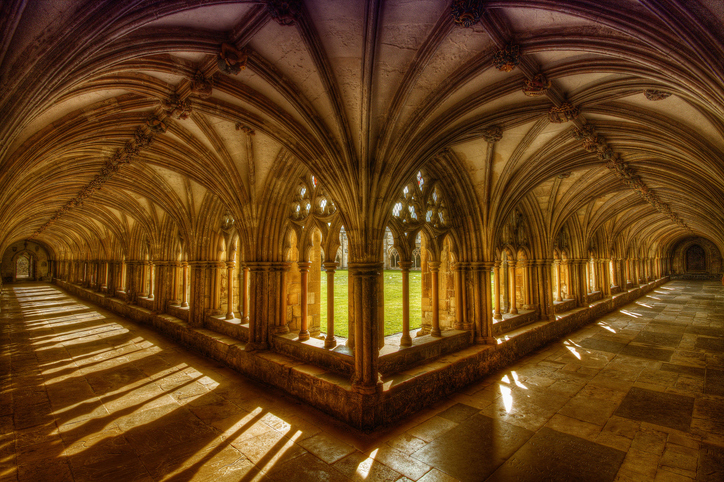
The magnificent Gold Cloisters of Norwich Cathedral (Credit: Phil Reeve via Getty Images)
The Romanesque style, which the Normans brought to Britain, has its roots in mainland Europe, particularly in the regions of modern-day France, Italy, and Germany. Its genesis was in the eighth and ninth centuries during the Carolingian Empire, centered in what is now France and Germany, under rulers such as Charlemagne who started reviving the grandeur of ancient Rome. The style then spread across Western Europe.
The style took cues from Roman architecture, including sturdy columns, rounded arches, cruciform plans, and vaulted ceilings. The monasteries of Cluny in France and Speyer Cathedral in Germany became the early benchmarks, blending solid stonework with decorative flair.
By the time the Normans adopted it in their homeland of Normandy, it was de rigueur for grand churches and castles, and perfect for their bold plans in England. By the latter part of the eleventh century as Norman rule took hold, the country witnessed a building boom the likes of which had never been seen before. Indeed it was a revolution without rival in English ecclesiastical architecture. From Chichester in the south, Durham in the north, Hereford in the west and Norwich in the east, these Romanesque cathedrals were some of the biggest and most astonishingly ornate religious buildings ever built.
Here are some of the most incredible Norman era cathedrals in Britain.
Winchester Cathedral
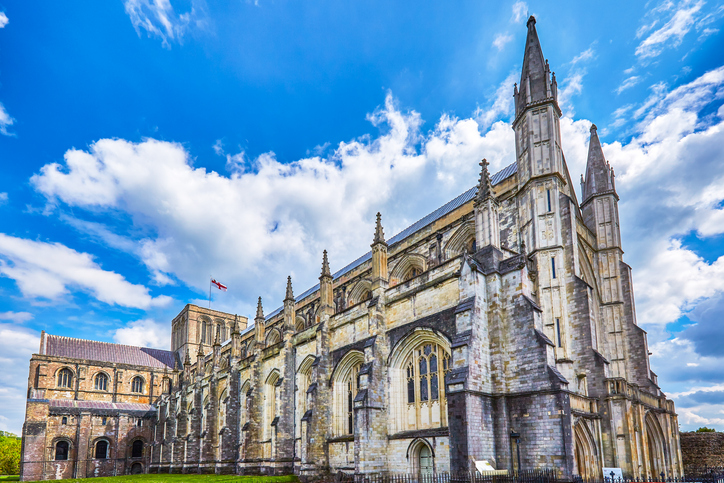
Winchester Cathedral (Credit: Peter Unger via Getty Images)
Winchester Cathedral in Hampshire is one of Britain’s grandest and most historically significant churches, as well as one of the biggest of its kind in Northern Europe. Building began in 1079 under Bishop Walkelin, one of William the Conqueror’s royal chaplains in France, replacing the earlier Saxon Minsters nearby, and much of the church survives much as he left it almost 950 years ago.
By 1093, what became one of the greatest of all Norman cathedrals in Britain was largely complete, and soon after, King William Rufus – the son of William the Conqueror – was buried beneath its soaring crossing tower. Over the centuries, successive bishops left their marks, most notably William of Wykeham and his master mason William Wynford who remodelled the Norman nave into one of the world’s great Perpendicular Gothic masterpieces in the fourteenth century.
Today, Winchester Cathedral boasts the longest medieval nave in Europe, blending Norman strength with medieval grace. The cathedral is also home to the mortuary chests of King Canute and King Egbert, the ninth century King of Wessex.
Lincoln Cathedral
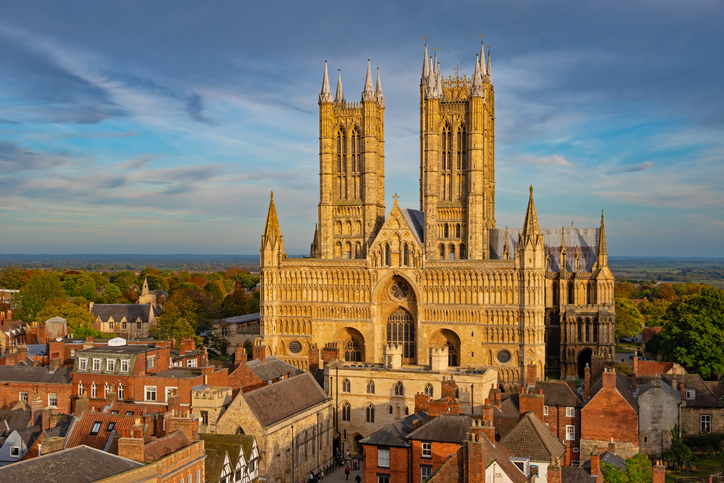
Lincoln Cathedral (Credit: ChrisHepburn via Getty Images)
Nineteenth century writer John Ruskin said ‘I have always held … that the cathedral of Lincoln is out and out the most precious piece of architecture in the British Isles and roughly speaking worth any two other cathedrals we have’.
Overlooking the city, Lincoln Cathedral was built between 1072 and 1092 by Bishop Remigius de Fécamp as a reminder of Norman domination. A devastating fire, sometime between the mid-1120s and early 1140s, followed by an earthquake in 1185, tore the structure apart, and its great revival came under Bishop Hugh of Avalon (later canonised as St Hugh of Lincoln), who embraced the new Gothic style with soaring arches and intricate rib vaulting.
Later medieval builders took one of the great Norman era cathedrals even higher, adding the central tower that made it the tallest building in the world for over two centuries. Lincoln owns one of the four remaining copies of the Magna Carta (on permanent loan to the nearby Lincoln Castle), and among its many quirks is the famous Lincoln Imp, a mischievous stone carving that’s become an emblem of the city, as well as the nickname of Lincoln City FC, ‘The Imps.’
Durham Cathedral
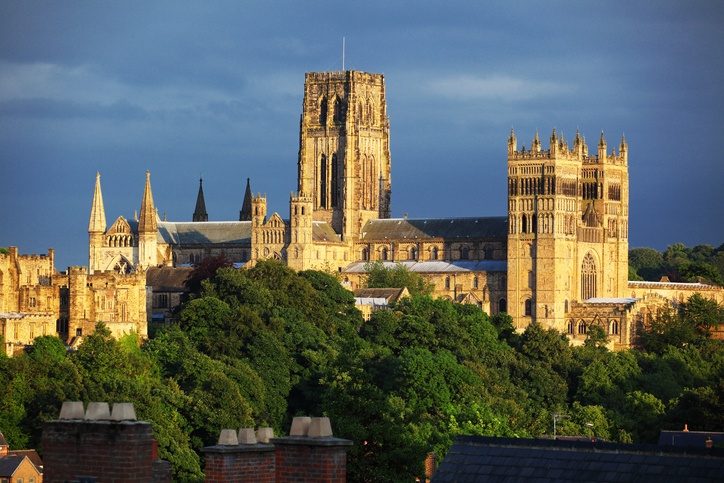
Durham Cathedral (Credit: guojieyi via Getty Images)
Famously the successor to the Lindisfarne Priory sacked by the Vikings in the ninth century, Durham Cathedral is widely recognised as the largest and most complete example of Norman architecture in England. It’s notable for the pioneering use of stone ribbed vaulting on a staggering scale, considered to this day decades ahead of its time. It was mostly built between 1093 and 1133, overseen by a medieval Norman monk by the name of William de St-Calais, primarily to house the relics of St Cuthbert and the Venerable Bede, turning it into one of the north of England’s most important religious sites.
Today, Durham Cathedral stands as one of the grandest Romanesque cathedrals in Britain, with later additions that showcase its architectural evolution. The twelfth-century Galilee Chapel displays intricate late Norman chevron patterns, while the fifteenth-century Perpendicular Gothic central tower and other enhancements reflect the gradual transition through medieval styles.
Ely Cathedral
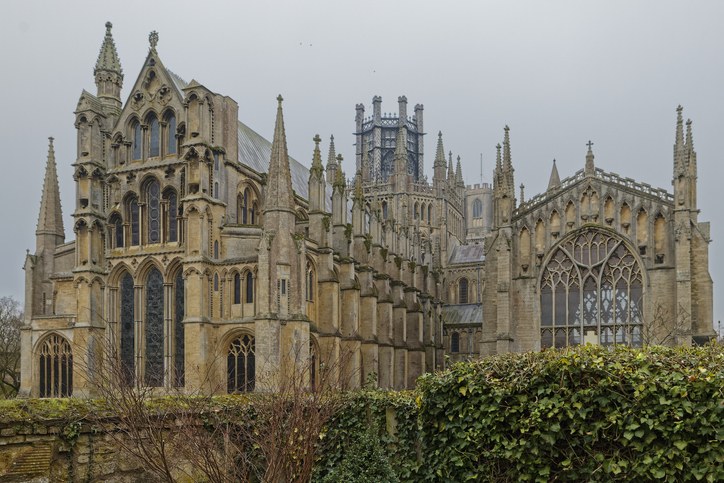
Ely Cathedral (Credit: Stephen Kahn via Getty Images)
Ely Cathedral in Cambridgeshire began construction in 1082 or 1083 under Abbot Simeon, following the Norman Conquest. The cathedral is famous for its impressive Norman nave, one of the longest in England, and its stunning fourteenth century Octagon Tower.
The original structure, one of the most imposing of Britain’s Norman-era cathedrals, was expanded over centuries with the addition of the Presbytery completed in 1252, and the Lady Chapel in 1349. Restorations in the eighteenth and nineteenth centuries by architects including Sir George Gilbert Scott helped preserve its grandeur. Ely’s blend of Norman solidity and Gothic elegance gives it the nickname the “Ship of the Fens”.
Canterbury Cathedral

Canterbury Cathedral (Credit: Laurie Noble via Getty Images)
Canterbury Cathedral in Kent is one of England’s oldest and most historic Christian structures, originally founded by St Augustine in 597 AD. Perhaps the most famous of all Romanesque cathedrals in the UK – perhaps even in Europe – it was rebuilt between 1070 and 1077 under Archbishop Lanfranc, after earlier churches were damaged by fire and Viking raids.
The cathedral is famous as the location of the murder of Archbishop of Canterbury Thomas Becket in 1170, an event which transformed it into a major pilgrimage destination which required a significant eastward extension to accommodate the increased number of visitors. After a fire in 1174, the choir was rebuilt in the Gothic style, and later medieval additions included Trinity Chapel between 1180 and 1184, and the tower, rebuilt in the Perpendicular Gothic style by the late fifteenth century. One quirky fact about the cathedral is that it has its own police force known as the Canterbury Cathedral Close Constables who have the same power as the regular police, but only within the boundary of the cathedral.
Canterbury remains the spiritual heart of the Church of England and welcomes in excess of half a million visitors every year.
Hereford Cathedral
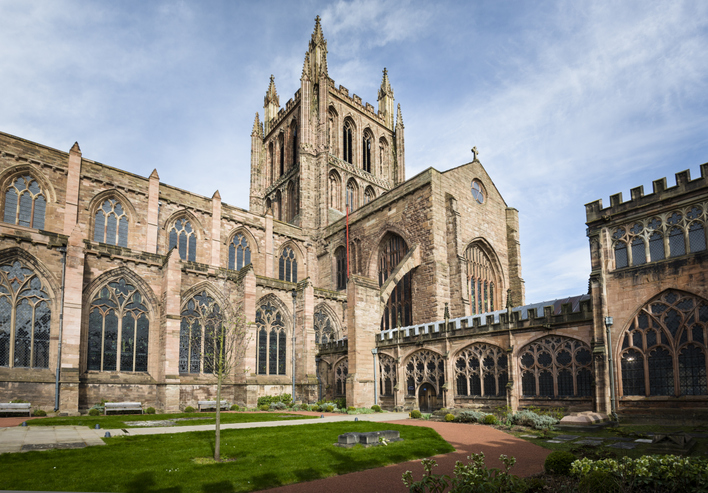
Hereford Cathedral (Credit: esp_imaging via Getty Images)
One of the most iconic Norman cathedrals in Britain, Hereford Cathedral, founded in 1079 by Bishop Robert of Lorraine, is a striking example of Norman architecture. It’s dedicated to two saints, St Ethelbert the King, and St Mary the Virgin. While the initial Norman church was built in the 1080s, significant modifications and additions were made in the centuries that followed, including the Lady Chapel between 1226 and 1246, and the rebuilding of the central tower in the first half of the fourteenth century.
Hereford is home to one of the largest surviving libraries of chained books in the world, and its greatest treasure is the enigmatic thirteenth century Mappa Mundi, the largest medieval map in existence, which is still studied by historians and scholars who continue to debate its creator and true meaning.



